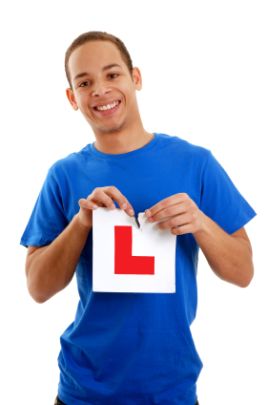Your legal obligations as a driver
There are some basics that everyone knows when it comes to being able to behind the wheel of a vehicle. These are of course meeting the legal eyesight requirements, being older than the minimum age for drivers, and holding a valid licence for the vehicle that you are driver.
When you are learning, you have to be supervised by a qualified driver of the appropriate age and display L plates - there are more details of this on another page.
When you are a qualified driver, you will need a vehicle, and there are stringent requirements in place as to what counts as a roadworthy vehicle that you can legally drive to.
It must be registered with the DVLA, have a valid tax disc and also have a current test certificate (if required), and also you must have suitable insurance in place to drive that vehicle.
There are various changes that you need to notify the DVLA of too, for instance if you change your name or your address, sell it, have a medical condition and if you make any alterations to that vehicle.
This site of course focuses on car drivers and those learning to drive a car and specifically pass their theory test, but if you come across this article and are interested in driving a larger vehicle then note that eyesight and medical standard requirements are higher for those who are driving those vehicles, there is lots of information on this at the DirectGov website section for Motoring.
Related Articles...
Tips on preventing car crime
It is an obvious statement that nobody wants their car to be broken into or have items stolen from their car. Yet despite this some drivers take little care in discouraging theft.
There are...
Risk factors when driving: snow and ice
When the snow is falling, there is one big problem - it is hard to see far infront. So like fog, reduced visibility is the problem with snow. And when there is heavy snowfall it can be very hard...
The multiple choice theory test
This is the first part of the theory test, and is done at a computer rather than on paper. There are many places around the country whereby you are able to take the theory test. Your driving...
How to learn UK road signs
Learning UK road signs is something that will unfortunately require you to
take the time to study them all. Many signs turn up in the theory test so
you do need to take the time to do this. But...
Test your Driving Theory
Want to test your driving theory knowledge? We have all the multiple choice revision questions for car drivers together with a range of hazard perception clips.
With our unique feedback and...
What details to get at an accident
When you swap details with a driver, here are the things that you should be sure to obtain from the other driver:
You need to of course get their name, their address and a contact telephone...
How to help yourself stay safe whilst driving
It is a sad fact, but a fact nonetheless, that there are very rare occasions on which you can just get unlucky and be involved in an accident, whether minor or major, that you are powerful to do...
Using head restraints
Your car will have head restraints in it, but do you take the time to adjust these before using the vehicle and ensuring they are set at the correct level for you? Head restraints in vehicles are...
How to cancel a theory test
When you book a theory test, you of course choose a date that you think you are going to be able to make.
However with the best will in the world, there are a whole range of reasons why on...
Who needs to take a theory test
A theory test is part of the process required for anyone who wants to become a qualified driver in the UK. There are two stages to being a standard car driver: first passing a theory test, and then...
Back to home page of driving theory test questions

